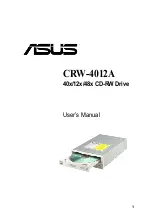
-
103
-
-
104
-
4. Set running command
When F0-02 = 2 (the command source is communication) and A7-00 = 1 (the user programmable
card is enabled), drive running is controlled by setting of A7-08.
You can implement control of the AC drive via PLC program by operating corresponding D com-
ponent.
Function Code
Parameter Name
Default
A7-08
Setting running command via the user
programmable card
Setting Range
0
0 to 7
0: No command
1: Forward run
2: Reverse run
3: Forward jog
4:Reverse jog
5: Coast to stop
6: Decelerate to stop
7: Fault reset
5. Set frequency reference
When frequency reference setting channel is communication and A7-00 = 1 (user programmable
card is enabled), frequency reference of the AC drive is determined by setting of A7-06.
You can implement control of frequency reference of AC drive via PLC program by operating
corresponding D component.
Function Code
Parameter Name
Default
A7-06
Setting frequency reference via the user
programmable card
Setting Range
0.00%
-
100.00% to 100.00%
The base value of this parameter is F0-10 (Max. Frequency).
6. Set torque reference.
When torque reference setting channel is communication and A7-00 = 1 (user programmable
card is enabled), torque reference of the AC drive is determined by setting of A7-07.
You can implement control of torque reference of AC drive via PLC program by operating corr-
esponding D component.
Function Code
Parameter Name
Default
A7-07
Setting torque reference via the user pro
-
grammable card
Setting Range
0.0%
-
200.0% to 200.0%
The base value of this parameter is rated motor torque.
7. Set user-defined faults.
When A7-00 = 1 (user programmable card is enabled), you can set user defined faults Err80 to
Err89 by operating corresponding D component to change setting of A7-09 in the range of 80 to 89.
Function Code
Parameter Name
Default
A7-09
Setting torque reference via the user
programmable card
Setting Range
0
0: No fault
80 to 89: User defined
fault code
If setting of A7-09 is out of 80 to 89, the setting will not take effect.
5.8.5
Master and Slave Control
The master and slave control is designed for multi-drive application, where system is driven by
multiple AC drives and motor shafts are coupled by gear, chain or conveyor belt.
The load is averagely allocated to AC drives in master and slave control. The external control
signal need be connected to the master only, and the master controls the slaves via communication.
The master must be in speed control and the slaves follow the torque or speed reference of the
master.
●
When motor shafts are connected rigidly by chain or gear, the slaves must work in torque control
to remove speed difference amongst drives.
●
When motor shafts are connected flexibly, the slaves must work in speed control because slight
speed difference amongst AC drives is allowed.
When master and slaves are in speed control, droop rate must be used. Figure 5-25 Rigid/Flexible
connection of the master and slave
EC590
Function parameters description
EC590
Function parameters description
















































